How to use a ratchet strap.
Posted on 26th January 2021
This content will be shown in the summary on the main blog page. Click on this text to edit it.
When transporting goods, it is often necessary to hold items securely in place for safety and to prevent breakage. Here’s where ratchet straps come in handy!
Ratchet straps are tie-down fastenings with a strong metal ratcheting lock attached to one end that acts as a one-way locking grip once the item is strapped into place. Also referred to as tie-down straps, lorry straps, lashing straps or cargo straps, their durable webbing means that you don’t need to worry about anything budging out of place.
Why do people use ratchet straps? Ratchet straps provide extra security over standard straps. This means that they are ideal for holding down your consignments during transport.
Where can they be used? They can be used anywhere that requires cargo to be held down or secured in place. For example, during removals, securing items on a trailer or to vehicles, strength, and grip for larger bulky items, keeping construction materials or other items together in place. They can even be used to secure a load that is already on a pallet in addition to shrink wrap.
How much weight can they take? Ratchet straps come in different sizes so it’s vital to know the maximum load capacity that you’ll be needing. They vary from lightweight straps, perfect for less intensive loads yet still able to carry a maximum weight load of 3,000kg, to heavy-duty straps designed for larger items and heavier transportation jobs with a weight limit between 4,000kg-10,000kg.
Many people enquire about ratchet straps and don’t know how to use one safely and properly. Below is a quick video where Nick and Martyn from the JDL team demonstrate how to secure an item using a ratchet strap, by tying a wheelie bin to the inside of a truck in less than two minutes.
Keep an eye out for more videos like this from JDL in the future!
Share this post:




